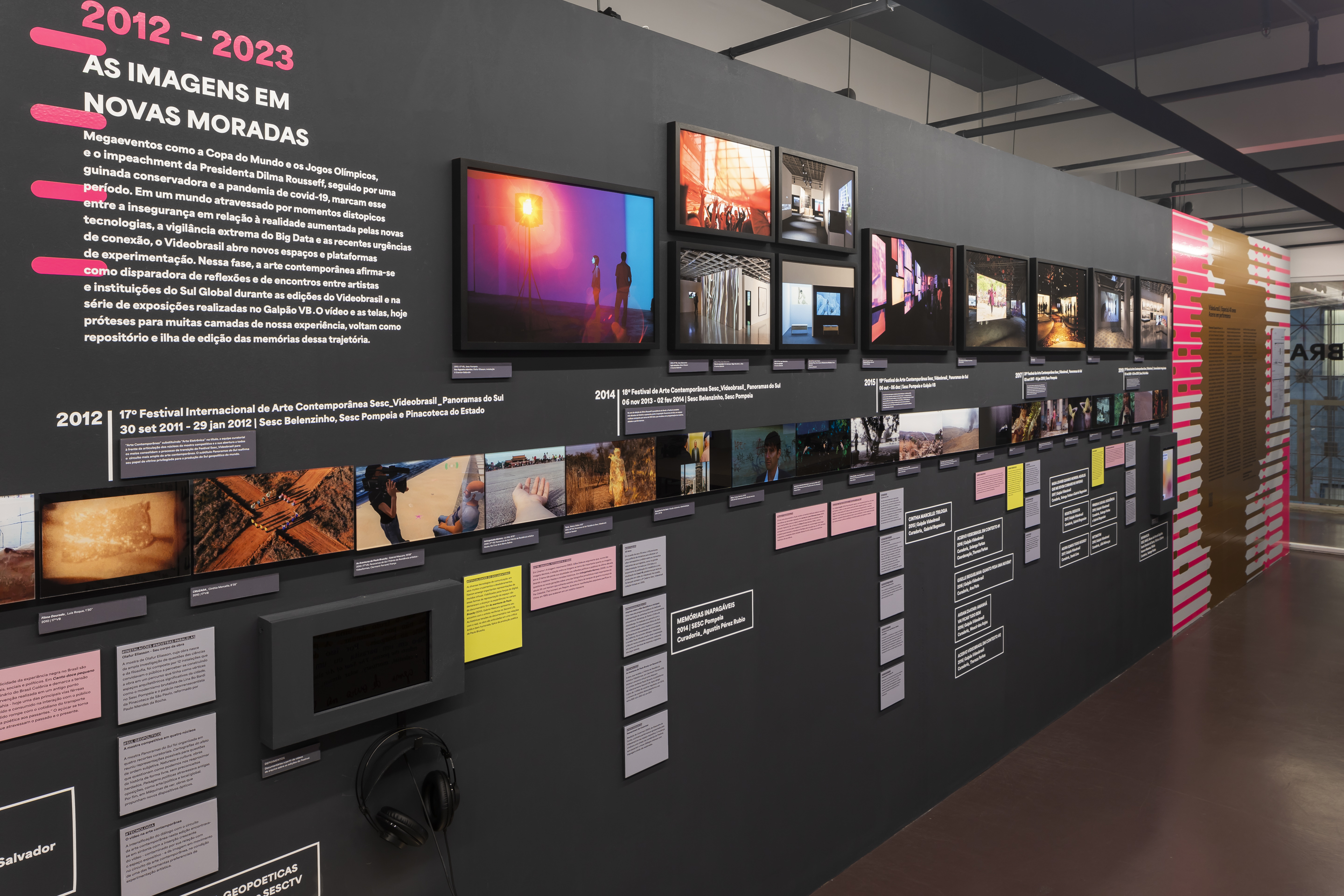Videobrasil | 40-Year Special
The Archive in Performance
Photo: ©Videobrasil Archive / Pedro N. Prata
40-Year Special is a deep dive into the collection of the Associação Cultural Videobrasil. Built over a 40-year trajectory, it preserves more than 3,000 video works of the recent Brazilian audiovisual production and of regions of the Global South—among those that participated in the festivals' competitive exhibitions, in addition to a series of acquisitions, commissionings and donations. The exhibition comprehends a multiple set of immersion modes. The timelines are organized around works that marked each of the 22 editions of Videobrasil, and around four documentaries available on iPads and which feature the voices of artists, scholars and members of the audience. The sequence of works that make up the timelines is displayed on four CRT TVs. Added to the timeline is a video and poetry program that plays in a loop on the LED Screen, which transcends a certain genre to reveal intersections between images and words, and fifteen programs available in the Video Library. They propose thematic routes, between historical panoramas and voices from specific regions of the Global South. The title was taken from a verse in the poem “Orfeu do Roncador” (2007), by Waly Salomão, which invites new journeys: “I swim in the world’s great open book.” The exhibition also includes fragments from the poet's Biblioteca de Grifos [Puzzle Library]. These are pages from Waly's personal book library that contain his notes, highlights and sketches, selected by Anna Dantes and Omar Salomão. To top it off, the Ideal Library: a living collection of reference publications suggested by the curatorial team of the 22nd Biennial, the curators of the educational program, artists, guests of the cycle Vivências na Bienal [Experiences in the Biennial] and other collaborators. The celebration of Videobrasil's 40 years also brings together the Historical Articles series, which consists of a set of texts highlighting the main events of each of the 21 editions of the festival that were already held, dealing both with the works presented and the participating artists and the political and social context of the time.
These elements—video works, objects, graphic marks—and the relationships that make up the four timelines of the 40-Year Special exhibition can be explored on the online version of the timeline available here.




